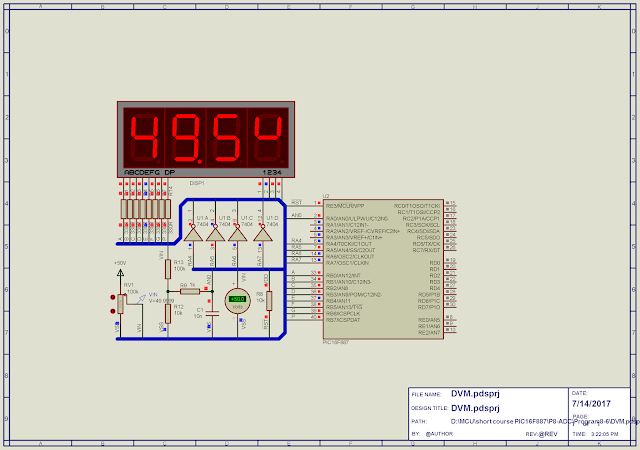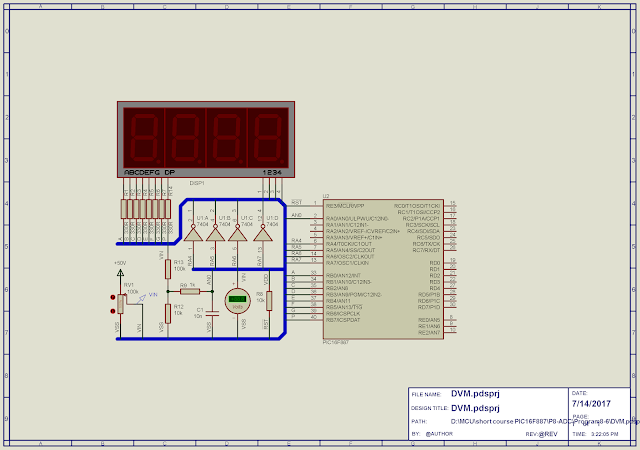Input signal to ADC channel of a microcontroller is other than DC voltage source. It typically range from 0 to 5V DC, as a conventional microcontroller, and voltage reference of ADC module are around +5V. Measuring input voltage within this range is straight forward using a calculation of ADC result and its step voltage size.
 |
| A DC +50V DVM using ADC of PIC16F887 MikroC - Program sample |
 |
| Reference circuit from Wikipedia |
Dividing factor depends on value of these two resistor that we can not give its detail and formula here. Using this method we can design a simple digital volt meter (DVM) with a maximum range of +50V DC.
In this example we select Z1 = 100kOhm and Z2 = 10kOhm. This circuit gives an output dividing factor of 0.09 at Vout. So whenever input voltage Vin = 50V then output voltage 50V * 0.09 that is around 5V, which is the maximum input voltage to ADC input channel.
 |
| Circuit Diagram |
In this program timer0 is used to schedule ADC reading before it's converted to actual DC input voltage. Using its 8MHz internal oscillator source, timer0 interrupt creates a timer tick for scheduling ADC reading. Whenever the total tick equal to 30 it's a one second timing. Hence ADC reading is activated for every 30 timer0 tick (one second).
However multiplexing display doesn't use this timer tick due total lines of C source code.
MikroC source code:
No comments:
Post a Comment